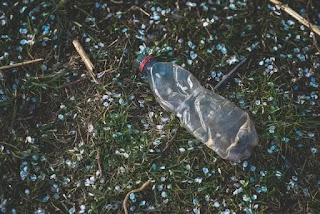By 2050, it is anticipated that there will be 9.5 billion individuals in the world. Considering that petroleum derivatives represent most of our current energy creation, providing sufficient economic power while diminishing environmental change is incredibly troublesome.
Microbial power devices, an idea that has acquired prevalence as of late, use microorganisms to deliver power (MFCs). The limit of explicit normally happening organisms to "relax" metals and trade electrons to create power is the reason for these energy components. Substances known as substrates, which incorporate natural parts present in wastewater, can be utilized to drive this cycle.
Presently, microbial power modules can create power to run little machines like number crunchers, fans, and LEDs. In our lab, we utilized "reenacted wastewater" to run the lights on a small Christmas tree. Be that as it may, the innovation has a ton of possibilities assuming it is increased.
How they function
Anodes and cathodes, or terminals that permit current to stream in one course or the other, are utilized in MFCs. A film isolates the anode and cathode chambers in commonplace MFC frameworks. The substrates are separated by the microorganisms on the anode into carbon dioxide, protons, and electrons.
While the protons course through the film, the created electrons are then moved through an outside circuit to the cathode chamber. Protons and electrons in the cathode chamber go through a connection that drains oxygen and produces water. Besides, electrons will stream for however long substrates are ceaselessly changed over; this is the very thing that power is.
It is invaluable to create power utilizing MFCs because the frameworks can be introduced anyplace, they produce less "ooze" than customary wastewater treatment strategies like enacted muck frameworks, they can be limited scale yet can be extended utilizing a secluded plan, they have a high capacity to bear saltiness, and they can work at room temperature.
Future advances in the power age could be worked with by the accessibility of a wide assortment of sustainable substrates that can be utilized in MFCs. These substrates remember natural material found for wastewater, pee, root exudates created in the dirt by live plants, sulfides, and, surprisingly, vaporous toxins.
Increasing natural gas production yield
By creating biogas that is essentially made out of methane, the essential part of gaseous petrol, anaerobic processing, in which microorganisms are utilized to separate biodegradable or squander matter without requiring oxygen, is utilized to recuperate energy from wastewater. Be that as it may, this technique is regularly inadequate.
As per research, the microbial networks that make up these digesters exchange electrons an interaction known as interspecies electron movement, which raises the possibility that they can utilize positive energy to change their digestion.
How much methane is delivered (and consequently how much power might be recuperated from the joined intensity and power plants) can be impressively expanded using electromethanogenesis, a method where an unassuming voltage is provided to anaerobic digesters.
Indeed, even while microbial energy components can deliver sufficient power to run little apparatuses, researchers are taking a gander at ways of increasing the reactors to help how much power they can create and better fathom extracellular electron transport. A few new companies, including Robial and Plant-e, are beginning to showcase microbial power devices. Later on, regenerative life emotionally supportive networks for long-length human space missions might try and create power utilizing microbial energy units. However still at its outset, innovation has extraordinary potential.
Pee Power
Squander things like dung and pee contain biodegradable material that can be changed into power. This was displayed in a microbial energy component latrine in Ghana, which recommended that restrooms may one day act as power plants. The lavatory, which was utilized for a very long time, had the option to compost the defecation and eliminate nitrogen from pee while delivering 268 nW/m2 of power, enough to run a Drove light inside the latrine.
The production of power from feces in lavatories could be truly progressive for exile camps and regions without admittance to framework power.
Plant MFC's
Plant root exudates, utilized in supposed plant MFCs, are another feasible and sustainable substrate that may be utilized by MFCs to create power. During development, plants produce sugars like glucose, some of which are discharged into the root foundation. The carbs are changed over into protons, electrons, and carbon dioxide by the microorganisms that are near the roots.
Protons are moved over a film in a plant MFC and afterward, recombine with oxygen to finish the electron move circuit. The created power can be utilized by connecting a heap to the hardware.
Plant MFCs could change how power is delivered in distant regions without matrix association. In metropolitan regions, trees could give road lighting.
Microbial desalination cells
Microbial desalination cells are an alternate kind of microbial power device. These contraptions desalinate water while utilizing microorganisms to deliver power, for example from wastewater. Utilizing layers containing adversely (anion) and emphatically (cation) charged particles, the desalination cycle for water is done in a chamber situated between the anode and cathode offices of MFCs.
Protons are delivered when the microorganisms in the anode chamber digest the emanating. Negative particles travel from the pungent water into the anode chamber because these protons can't cross the anion hindrance. Decidedly charged particles move from the pungent water to the cathode chamber because of protons being polished off at the cathode, desalinating the water in the moderate chamber. It assists with expanding the viability of power age when particles are delivered in the anode and cathode chambers.
Presently, customary water desalination requires a ton of energy and is subsequently costly. It would be progressive to foster a strategy that produces (instead of purposes) power and does enormous-scope desalination.




_11zon.png)

No comments:
Post a Comment